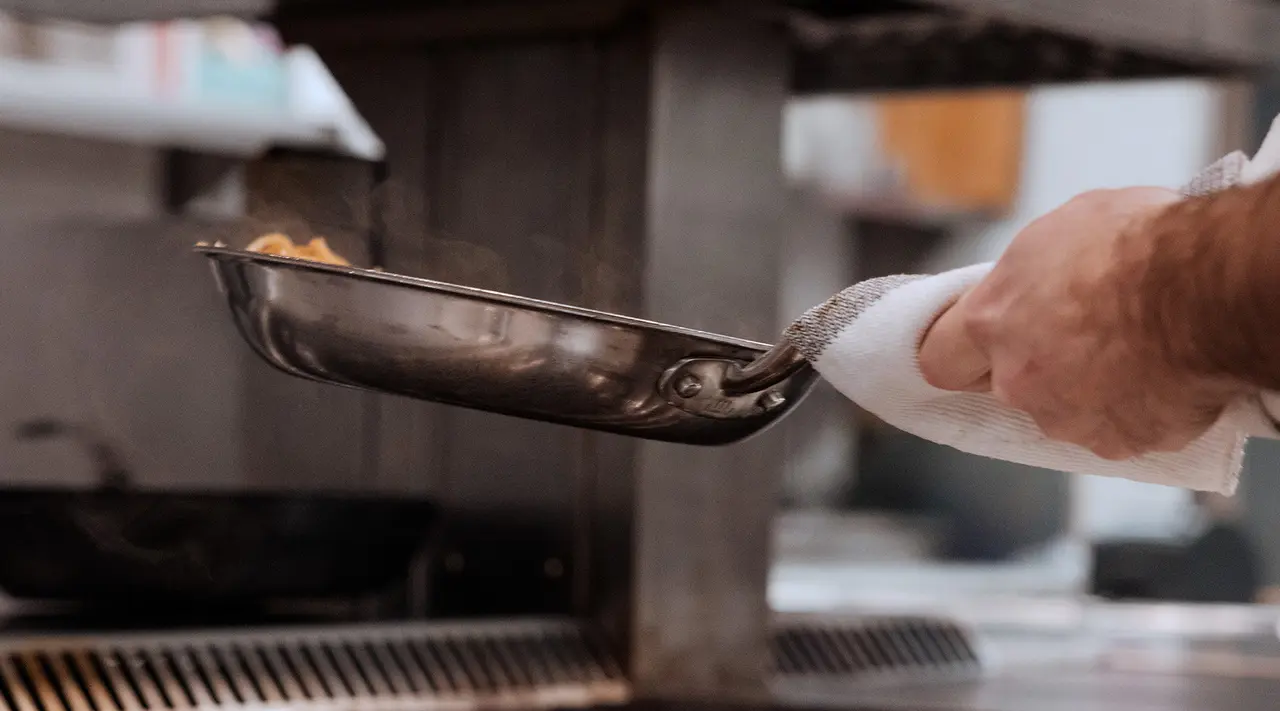Not all cookware is ready to be cooked with straight out of the box. Some cookware doesn’t come with a nonstick coating, and is designed to be used after being seasoned.
Seasoning is the process of applying a very thin layer of coating (such as vegetable oil) on the surface of your pot or pan, which then acts as a barrier between the cookware and what you're cooking in it. This is common for materials like cast iron and carbon steel, but is the same true for stainless steel cookware? (Spoiler alert: no, we don’t suggest seasoning your stainless cookware.)
Read on to understand why.
Does Stainless Steel Cookware Need to be Seasoned?

No, we don't recommend seasoning stainless steel cookware. Seasoning cookware adds a layer of oil to the cooking surface, which then fills in the pores of metal to make the cookware non stick. Oil and cooking fat are an essential process of cooking with stainless steel, so adding it beforehand is not a necessary step like it is with cast iron or carbon steel.
In addition, cleaning a stainless steel pan with soap and warm water once you’ve finished cooking with it removes oil from its surface. This means, if you choose to do so, you would need to season your stainless pans before and after each wash.
The Case for Seasoning

That said, some cooks choose to season their stainless steel frying pans to create a smoother, more non stick surface.
Food can stick to stainless steel cookware, so some believe seasoning makes for an easier cleanup and more non stick cooking experience. The truth is, knowing how to preheat and cook with stainless steel makes all the difference.
How to Cook with Stainless Steel
To avoid needing to season your stainless pans, the most important step is to preheat. Unlike non stick or ceramic, stainless steel should always be preheated completely empty.
Before adding ingredients or cooking fat, check to make sure it's properly preheated—best done by adding a few drops of water to the surface of the pan. The pan is ready to go when the water breaks apart and dances over the surface. If it steams, it's too hot; if nothing happens, it's too cold.
Ensuring your pan is properly heated prevents sticking and promises even, thorough heating—but that's not the only step to take for an easy cooking experience with stainless. Here are a few other tips to keep in mind.
- Don't flip your food too early—this practically guarantees a mess to clean up afterward. Your food will release from the surface of the pan when it's ready, so trust your pan and listen to what it's telling you.
- Temper (or bring your food to room temperature) prior to adding it to the pan. Cold food on a hot pan causes the pores of the pan to expand and contract quickly, which causes sticking.
- While stainless steel can get ripping hot (one of many reasons it's beloved in kitchens around the world), a home cook should rarely need to go above medium-high. The higher the heat, the higher risk for burning.
Ready to Cook?
At the end of the day, whether or not you choose to season stainless steel comes down to your personal preference. We're of the opinion it doesn't make much of a difference, especially when using a quality stainless pan—like our fan-favorite 5-ply, Italian-made Stainless Clad Cookware.
























